Stromal remodeling regulates dendritic cell abundance and activity in the tumor microenvironment
- PMID: 35977482
- PMCID: PMC9402878
- DOI: 10.1016/j.celrep.2022.111201
Stromal remodeling regulates dendritic cell abundance and activity in the tumor microenvironment
Abstract
Stimulatory type 1 conventional dendritic cells (cDC1s) engage in productive interactions with CD8+ effectors along tumor-stroma boundaries. The paradoxical accumulation of "poised" cDC1s within stromal sheets is unlikely to simply reflect passive exclusion from tumor cores. Drawing parallels with embryonic morphogenesis, we hypothesized that invasive margin stromal remodeling generates developmentally conserved cell fate cues that regulate cDC1 behavior. We find that, in human T cell-inflamed tumors, CD8+ T cells penetrate tumor nests, whereas cDC1s are confined within adjacent stroma that recurrently displays site-specific proteolysis of the matrix proteoglycan versican (VCAN), an essential organ-sculpting modification in development. VCAN is necessary, and its proteolytic fragment (matrikine) versikine is sufficient for cDC1 accumulation. Versikine does not influence tumor-seeding pre-DC differentiation; rather, it orchestrates a distinctive cDC1 activation program conferring exquisite sensitivity to DNA sensing, supported by atypical innate lymphoid cells. Thus, peritumoral stroma mimicking embryonic provisional matrix remodeling regulates cDC1 abundance and activity to elicit T cell-inflamed tumor microenvironments.
Keywords: CD40; CP: Cancer; CP: Immunology; cDC1; checkpoint inhibitors; dendritic cells; immunotherapy; proteoglycans; tumor matrix; tumor stroma; versican; versikine.
Copyright © 2022 The Author(s). Published by Elsevier Inc. All rights reserved.
Conflict of interest statement
Declaration of interests F.A. and C.H. are listed as inventors on US patent US20170258898A1: “Versikine for inducing or potentiating an immune response.”
Figures
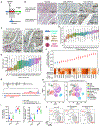
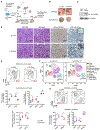
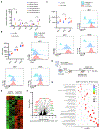

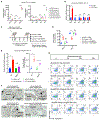
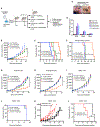
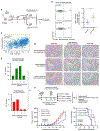
Similar articles
-
Versican-Derived Matrikines Regulate Batf3-Dendritic Cell Differentiation and Promote T Cell Infiltration in Colorectal Cancer.J Immunol. 2017 Sep 1;199(5):1933-1941. doi: 10.4049/jimmunol.1700529. Epub 2017 Jul 28. J Immunol. 2017. PMID: 28754680 Free PMC article.
-
Immunoregulatory roles of versican proteolysis in the myeloma microenvironment.Blood. 2016 Aug 4;128(5):680-5. doi: 10.1182/blood-2016-03-705780. Epub 2016 Jun 3. Blood. 2016. PMID: 27259980 Free PMC article.
-
Versican in the Tumor Microenvironment.Adv Exp Med Biol. 2020;1272:55-72. doi: 10.1007/978-3-030-48457-6_4. Adv Exp Med Biol. 2020. PMID: 32845502 Review.
-
Effective cancer immunotherapy by natural mouse conventional type-1 dendritic cells bearing dead tumor antigen.J Immunother Cancer. 2019 Apr 8;7(1):100. doi: 10.1186/s40425-019-0565-5. J Immunother Cancer. 2019. PMID: 30961656 Free PMC article.
-
The multiple, complex roles of versican and its proteolytic turnover by ADAMTS proteases during embryogenesis.Matrix Biol. 2014 Apr;35:34-41. doi: 10.1016/j.matbio.2014.01.005. Epub 2014 Jan 18. Matrix Biol. 2014. PMID: 24444773 Free PMC article. Review.
Cited by
-
Phase I/II Trial of Perioperative Avelumab in Combination With Chemoradiation in the Treatment of Stage II/III Resectable Esophageal and Gastroesophageal Junction Cancer.J Surg Oncol. 2025 Jun;131(7):1293-1301. doi: 10.1002/jso.28070. Epub 2025 Jan 5. J Surg Oncol. 2025. PMID: 39757733 Free PMC article. Clinical Trial.
-
Stromal Versican Accumulation and Proteolysis Regulate the Infiltration of CD8+ T Cells in Breast Cancer.Cancers (Basel). 2025 Apr 25;17(9):1435. doi: 10.3390/cancers17091435. Cancers (Basel). 2025. PMID: 40361362 Free PMC article.
-
V3: an enigmatic isoform of the proteoglycan versican.Am J Physiol Cell Physiol. 2023 Aug 1;325(2):C519-C537. doi: 10.1152/ajpcell.00059.2023. Epub 2023 Jul 3. Am J Physiol Cell Physiol. 2023. PMID: 37399500 Free PMC article. Review.
-
Rapid Autopsy to Define Dendritic Cell Spatial Distribution and T Cell Association in Lung Adenocarcinoma.J Immunol. 2024 Oct 1;213(7):1033-1041. doi: 10.4049/jimmunol.2400234. J Immunol. 2024. PMID: 39120462 Free PMC article.
-
ADAMTS Proteases: Their Multifaceted Role in the Regulation of Cancer Metastasis.Dis Res. 2024;4(1):40-52. doi: 10.54457/DR.202401004. Dis Res. 2024. PMID: 38948119 Free PMC article.
References
-
- Balan S, Radford KJ, and Bhardwaj N (2020). Unexplored horizons of cDC1 in immunity and tolerance. Adv. Immunol 148, 49–91. - PubMed
-
- Bell D, Chomarat P, Broyles D, Netto G, Harb GM, Lebecque S, Valladeau J, Davoust J, Palucka KA, and Banchereau J (1999). In breast carcinoma tissue, immature dendritic cells reside within the tumor, whereas mature dendritic cells are located in peritumoral areas. J. Exp. Med 190, 1417–1426. - PMC - PubMed
Publication types
MeSH terms
Substances
Grants and funding
LinkOut - more resources
Full Text Sources
Other Literature Sources
Medical
Molecular Biology Databases
Research Materials
Miscellaneous

